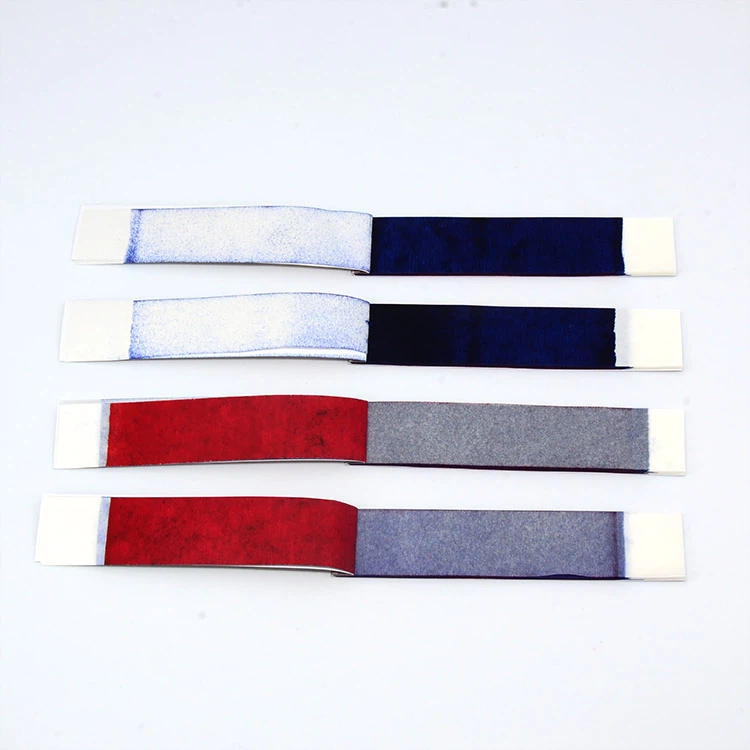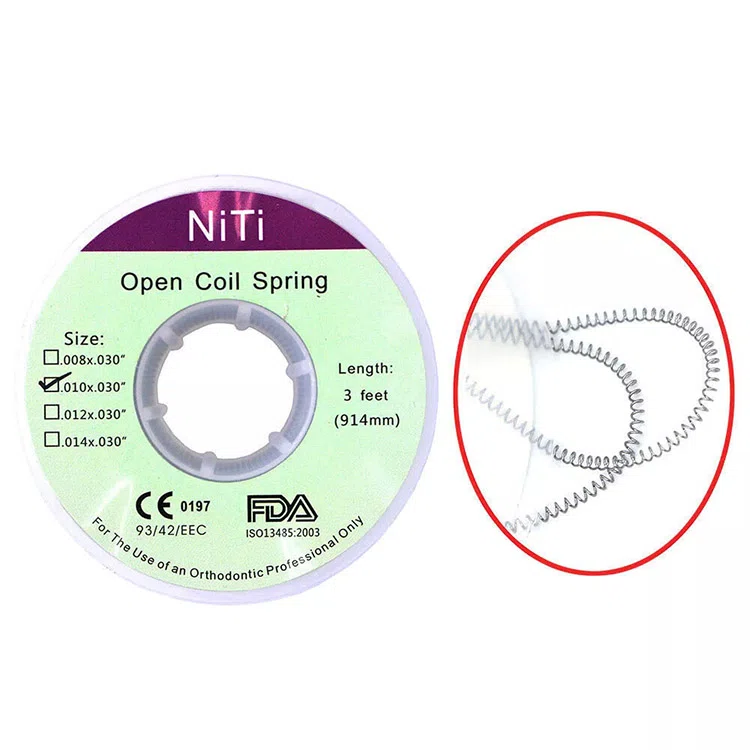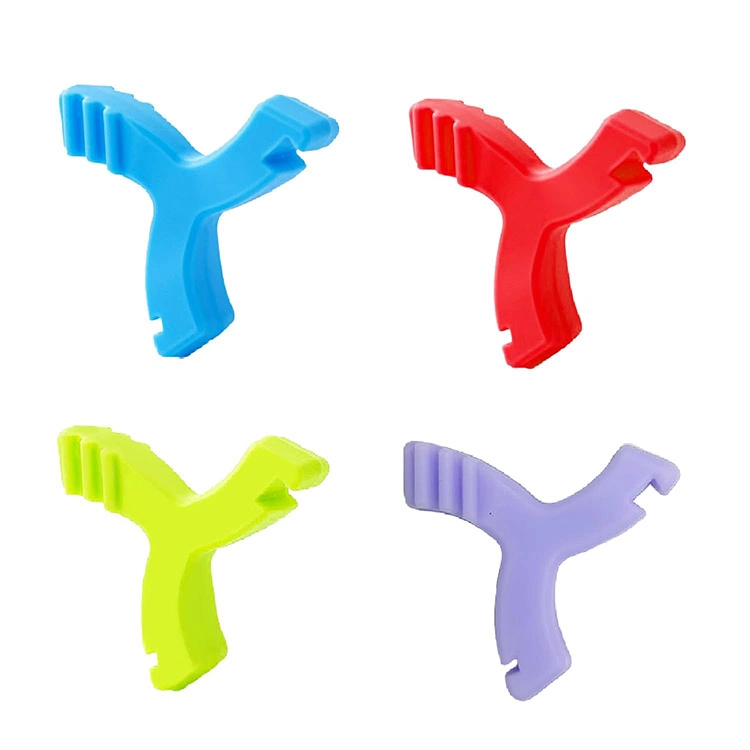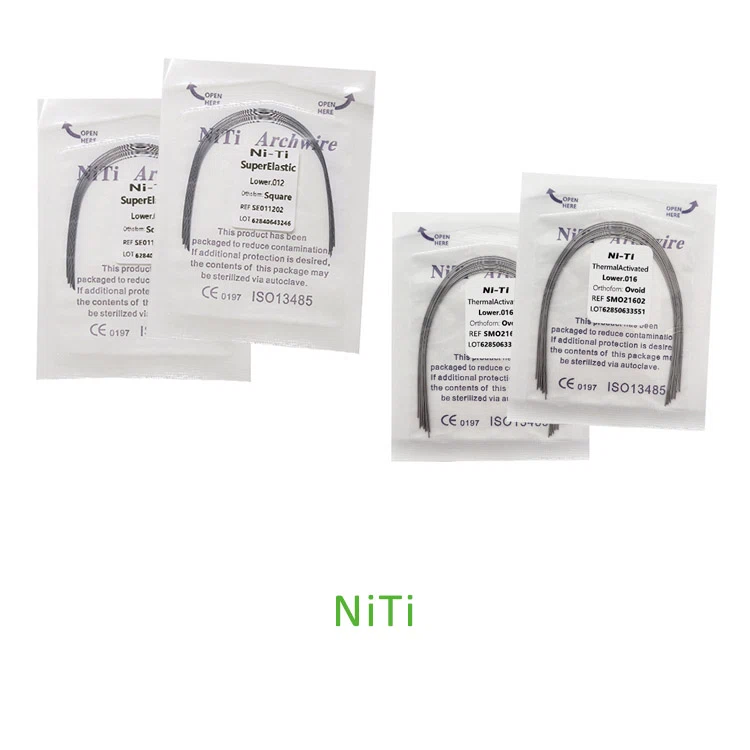
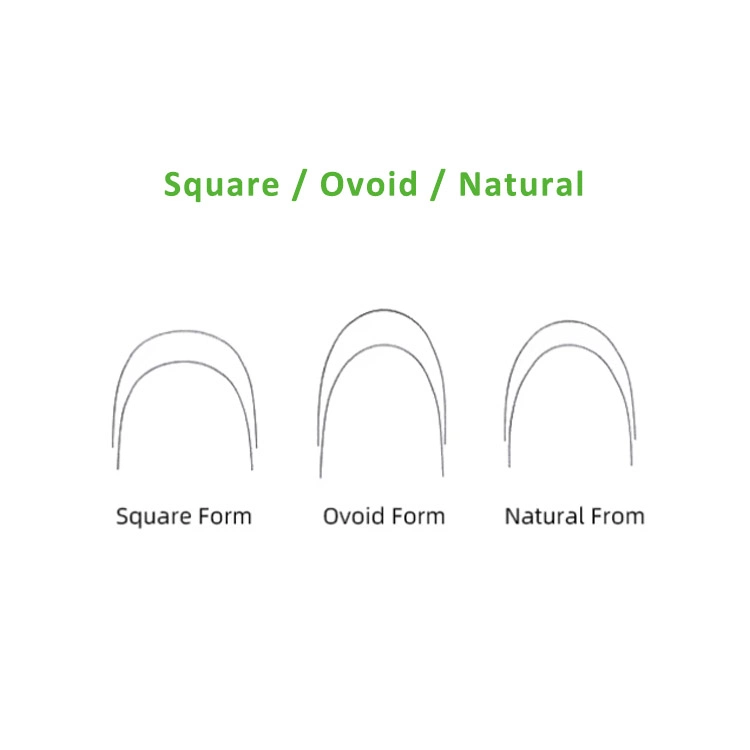
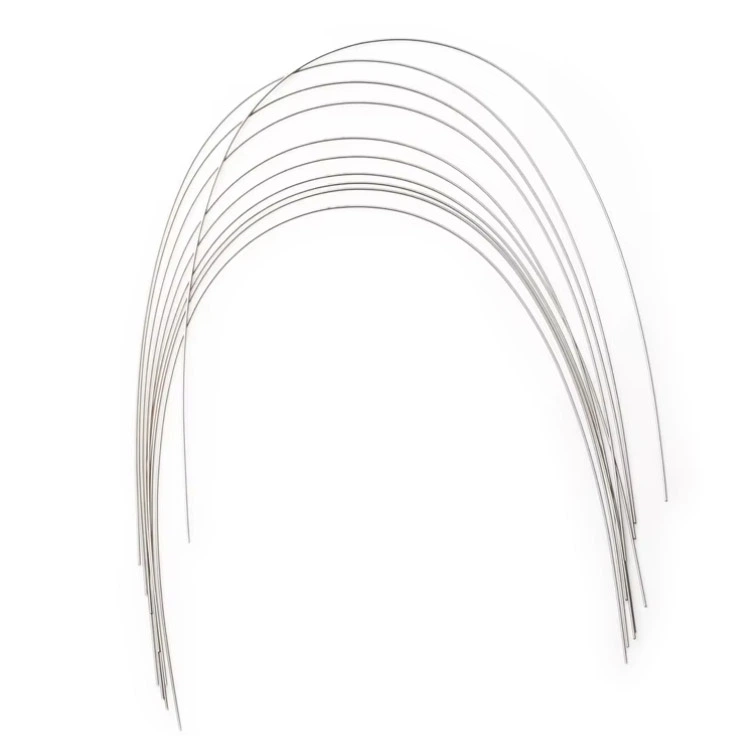
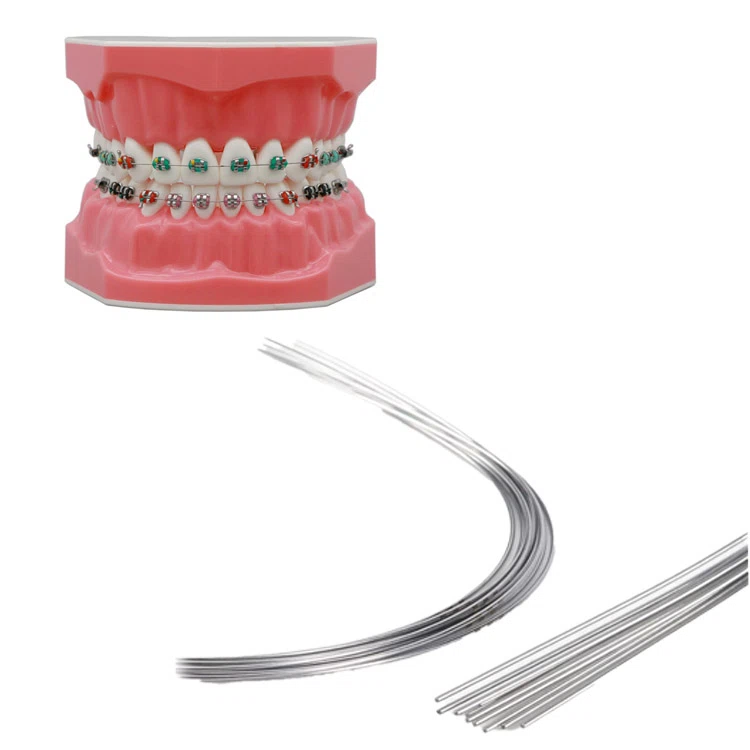
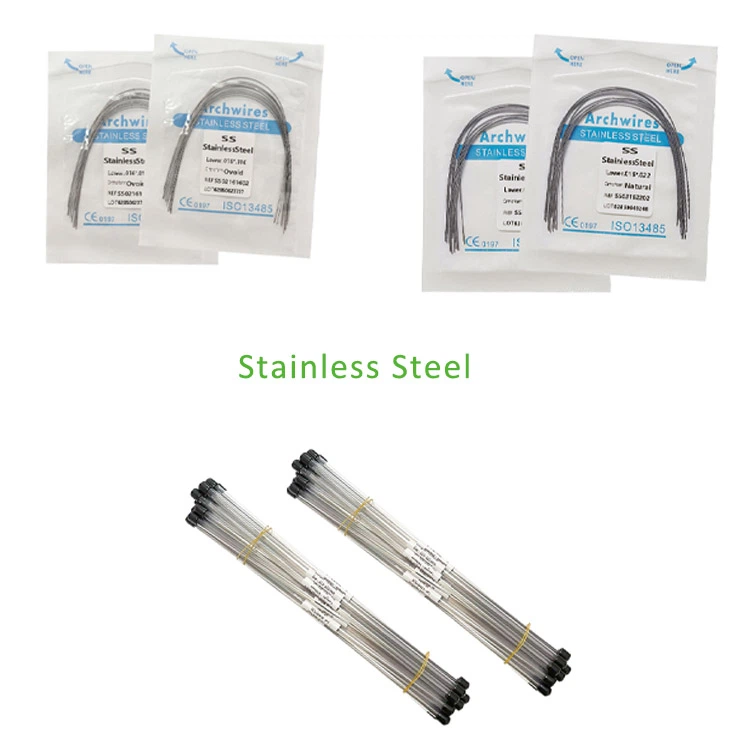
Filo dell'arco ortodontico
- Niti / cavo in acciaio inossidabile
- pacchetto: 10PCS/pacchetto
- Mostre un'ottima primavera indietro
- Prestazioni coerenti
- Alto lucido per l'attrito ridotto
- Dimensione completa della serie e tipo di forma per la scelta
Il filo dell'arco ortodontico applica la pressione sui denti per indurli a spostarsi in una posizione designata. Di solito viene utilizzato insieme alle parentesi graffe, e regolando la tensione e la direzione del filo ortodontico, Può migliorare efficacemente l'allineamento dei denti e morsi i problemi.
I fili dell'arco ortodontico applicano una leggera tensione continua sui punti di supporto e ancoraggio nei denti. Questi denti si muoveranno sottilmente, ancora gradualmente per un lungo periodo di tempo, spostarsi in posizioni desiderate. Il risultato del trattamento ortodontico è l'allineamento dei denti, Archi dentali simmetrici, e una riduzione della magrezza tra i denti, che cambia il contorno facciale, rendendolo più armonioso ed esteticamente piacevole. I fili dell'arco ortodontico raddrizzano i denti e migliorano la capacità di masticare con un morso migliore.
Categoria di filo dell'arco ortodontico
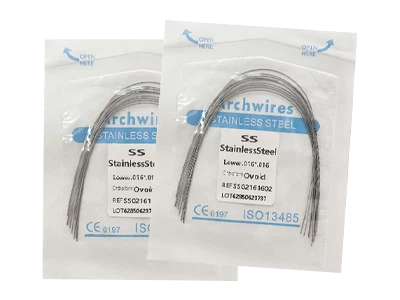
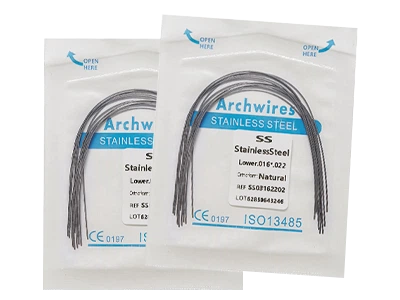
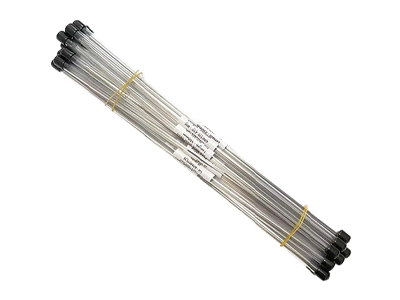
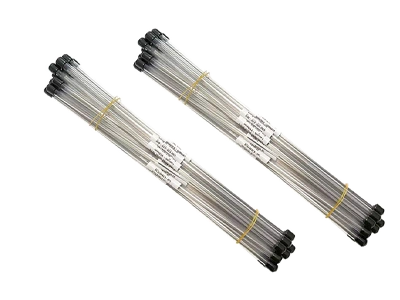
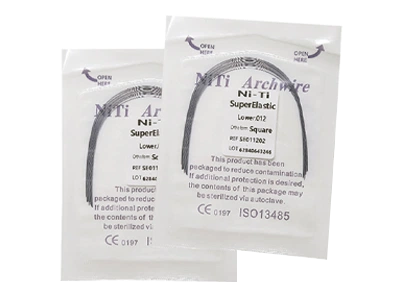
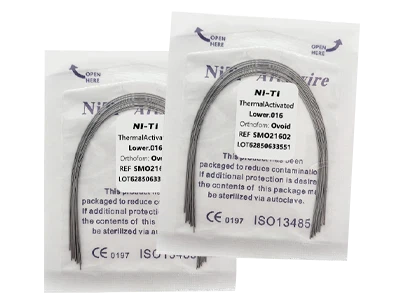
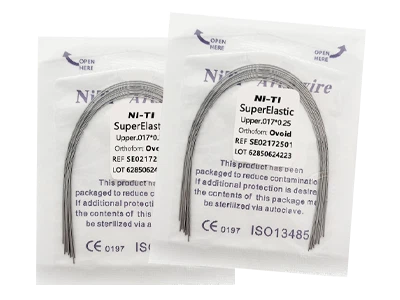
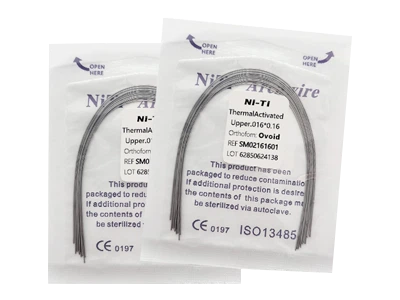
Basato sulla composizione del materiale, I nostri archi ortodontici possono essere classificati come fili in acciaio inossidabile e fili NITI. Mentre il filo dell'arco in acciaio inossidabile è economico e ha una buona abrasione e resistenza alla corrosione ed è stabilità a lungo nella cavità orale, La durezza è alta, Non comodo come i fili Niti, e a basso contenuto di elasticità. Il filo dell'arco NITI è super elastico e ha una funzione di memoria di forma. È più flessibile, permettendolo di adattarsi meglio alla superficie del dente, rendendolo così più comodo ma a un prezzo più alto.
Prodotti correlati
La definizione di fili per arco ortodontico
Il filo dell'arco ortodontico è una componente chiave nel trattamento ortodontico orale. È un materiale a filo sottile con proprietà meccaniche specifiche, trasmette principalmente la forza ortodontica attraverso il sistema di staffe ad arco, favorendo il movimento lento dei denti e regolando il rapporto occlusale. Durante l'intero processo di trattamento, i fili ortodontici svolgono un duplice ruolo sia in quanto a “conduttore di forza” e un “guida dei denti”, e la loro prestazione influisce direttamente sul risultato ortodontico, durata del trattamento, e il comfort del paziente.
I fili dell'arco ortodontico sono generalmente realizzati in leghe metalliche, come fili di acciaio inossidabile composti da ferro, cromo, e nichel; fili in lega di nichel-titanio realizzati in nichel e titanio; e fili in lega di beta-titanio a base di titanio legato con elementi come molibdeno e niobio.
Principio dei fili dell'arco ortodontico
Il filo dell'arco ortodontico trasmette con precisione la forza ortodontica preimpostata dal medico al dente bersaglio attraverso la sua connessione con gli attacchi (basi metalliche o ceramiche aderivano alla superficie del dente, che sono accessori per il trattamento ortodontico), generando una forza di compressione e favorendo così il lento movimento del dente all'interno dell'osso alveolare. L’obiettivo finale è raggiungere l’obiettivo terapeutico di raddrizzare i denti, coordinare le relazioni occlusali e migliorare la morfologia facciale.
Classificazione dei materiali e caratteristiche dei fili per archi ortodontici
1. Filo di acciaio inossidabile
- Composizione: Composto principalmente da metalli come il ferro, cromo, e nichel (contenuto di cromo: 17%-19%, contenuto di nichel: 8%-10%), alcuni prodotti professionali aggiungono anche elementi come molibdeno e titanio per ottimizzare le prestazioni.
- Caratteristiche: Alta resistenza, grande rigidità, forte resistenza alla corrosione, e meno incline alla ruggine in un ambiente orale umido. Ha un modulo elastico moderato, che può fornire una forza ortodontica stabile e ha buone prestazioni di elaborazione. Può essere piegato in varie forme di arco in base alle esigenze del trattamento.
- Fase applicabile: Viene spesso utilizzato nelle fasi intermedie e successive del trattamento ortodontico, come la regolazione fine dopo l'allineamento dei denti e la correzione del rapporto occlusale, ed è particolarmente adatto per casi con elevati requisiti di efficienza ortodontica.
2. Filo in lega di nichel-titanio
- Composizione: Una lega a memoria di forma composta da nichel (50%-55%) e titanio (45%-50%), può essere classificato in filo di nichel-titanio austenitico e filo di nichel-titanio martensitico in base alla sua struttura cristallina.
- Caratteristiche: Ha effetto memoria di forma e super elasticità, può ritornare alla forma preimpostata a temperatura corporea, e fornire continuamente una forza correttiva delicata e stabile. Ha un modulo elastico basso, provoca meno irritazione ai denti, e migliora il comfort del paziente.
- Fase applicabile: Utilizzato principalmente nella fase iniziale del trattamento, come denti allineati e occlusione aperta, è particolarmente indicato nei casi con grave affollamento dentale e torsione, riducendo efficacemente il disagio del paziente.
3. Filo in lega di titanio (Filo in lega di β-titanio)
- Composizione: Leghe formate aggiungendo elementi come il molibdeno, niobio, e dallo zirconio al titanio come materiale di base (come la lega Ti-Mo-Nb-Zr).
- Caratteristiche: Combina l'elevata resistenza del filo di acciaio inossidabile con la buona elasticità del filo in lega di nichel-titanio, e il suo modulo elastico è compreso tra i due. Ha una buona biocompatibilità e non contiene nichel, rendendolo adatto ai pazienti allergici al nichel. Ha una forte resistenza alla corrosione e buone prestazioni di lavorazione, e può essere trasformato in forme complesse di fili ad arco.
- Fase applicabile: È adatto per la fase intermedia del trattamento ortodontico, soprattutto durante il periodo di transizione dall'allineamento dei denti alla regolazione fine. Non solo può fornire una forza correttiva sufficiente, ma anche garantire la stabilità del movimento dei denti.
I tipi di fili dell'arco ortodontico Forze correttive
In base alla natura della forza generata dai fili dell'arco ortodontico, sono principalmente classificati nelle seguenti tipologie:
- Forza elastica: Quando i fili dell'arco ortodontico subiscono una deformazione elastica, viene generata una forza elastica, che è la principale fonte di energia per il movimento dei denti. Il filo in lega di nichel-titanio è il più delicato, forza elastica più stabile e più duratura, mentre il filo di acciaio inossidabile ha una forza elastica maggiore ma una durata relativamente più breve.
- Attrito: L’attrito tra i fili ortodontici e gli attacchi ha un impatto significativo sulla velocità del movimento dei denti. Durante la fase di allineamento dei denti, è necessario ridurre al minimo l'attrito per migliorare l'efficienza del movimento. Durante la fase di regolazione fine, un attrito adeguato aiuta a mantenere la posizione stabile dei denti.
- Forza di coppia: La forza di torsione generata dalla piegatura del filo dell'arco ortodontico può controllare l'inclinazione delle labbra e della lingua dei denti, migliorare il rapporto occlusale e la forma del viso. Il filo in lega di titanio ha una buona stabilità della forza di torsione ed è un materiale comunemente utilizzato per il controllo della torsione nella pratica clinica.
Fattori che influenzano la forza ortodontica dei fili dell'arco ortodontico
- Proprietà dei materiali: Il modulo elastico, la resistenza allo snervamento e il limite elastico dei diversi materiali variano, che determinano direttamente l’entità e la durata della forza correttiva. Ad esempio, il filo in lega di nichel-titanio ha un basso modulo elastico, con conseguente forza correttiva relativamente piccola ma una durata più lunga. Il filo di acciaio inossidabile ha un modulo elastico elevato, fornendo una forza correttiva relativamente grande ma di breve durata.
- Il diametro dei fili ortodontici: Il diametro dei fili è un fattore chiave che influenza la forza ortodontica. Maggiore è il diametro, maggiore è la forza e maggiore è la forza correttiva. Più piccolo è il diametro, migliore è l'elasticità e minore è la forza correttiva. Le specifiche del diametro comunemente utilizzate includono 0.012 pollici, 0.014 pollici, 0.016 pollici, 0.018 pollici, 0.020 pollici, ecc.
- La forma dell'arco: La forma dell'arco (come circolare, piazza, o rettangolare) influenza l'area di contatto con la staffa e la forza di attrito, influenzando così la trasmissione della forza ortodontica. Il filo circolare ha una piccola area di contatto e un basso attrito, rendendolo adatto alla fase di allineamento dei denti. I fili quadrati e rettangolari hanno un'ampia area di contatto, che possono trasmettere più efficacemente la forza di coppia e sono adatti per la fase di regolazione fine.
Precauzioni per i fili dell'arco ortodontico
- Mantenere l'igiene orale: Dopo che il filo dell'arco ortodontico è collegato agli attacchi, i residui di cibo tendono ad accumularsi. Se non pulito in tempo, può portare all'accumulo di placca dentale, che a sua volta può causare problemi come carie e gengiviti.
- Evitare di masticare oggetti duri: La robustezza e la resistenza all’usura dei fili ortodontici sono limitate. Masticare oggetti duri (come le noci, ossa, caramelle dure, cubetti di ghiaccio, ecc.) potrebbe causare la rottura dei fili, deformarsi o far cadere le staffe, influenzando il progresso del trattamento.
- Visite di controllo regolari: I pazienti devono sottoporsi a visite di follow-up regolari come richiesto dal medico (di solito ogni 4 A 8 settimane), in modo che il medico possa regolare il diametro, forma o tensione dell'arco ortodontico in base al movimento dei denti.
- Presta attenzione ai sintomi di disagio orale: Dopo aver indossato gli archi ortodontici per la prima volta o aver apportato modifiche, i pazienti possono avvertire fastidi come mal di denti o usura della mucosa orale, che di solito si attenua gradualmente all'interno 1 A 2 settimane. Se il disagio persiste o peggiora, è necessario richiedere immediatamente assistenza medica per l'esame.
FAQ
Non esiste uno standard fisso per la frequenza di sostituzione del filo dell’arco ortodontico. Dipende principalmente dal ciclo di trattamento, la velocità del movimento dei denti e gli obiettivi della fase di trattamento. Generalmente, durante l'intero trattamento ortodontico (1.5 A 3 anni), vengono sostituiti i fili ortodontici 4 A 8 volte.
Conserva la parte rotta e contatta il tuo dentista. Riadatterà o sostituirà il filo dell'arco ortodontico. Non maneggiarlo da soli per evitare il rischio di ingestione accidentale.
Pulisci delicatamente l'area attorno all'arco e agli attacchi con uno scovolino interdentale, e utilizzare un idropulsore per rimuovere i residui di cibo.
SÌ. Al termine del trattamento ortodontico, il dentista rimuoverà tutti i fili dell'arco ortodontico, attacchi e altri componenti dalla bocca all'ultima visita di controllo. Dopo la rimozione, pulirà e luciderà la superficie dei denti. Si consiglia di indossare degli apparecchi di contenzione per mantenere la posizione stabile dei denti ed evitare che rimbalzino.
I principi fondamentali della selezione (biocompatibilità e corrispondenza degli obiettivi terapeutici) sono coerenti, ma a causa delle diverse condizioni dentali e parodontali di bambini e adulti, ci sono differenze dettagliate.

